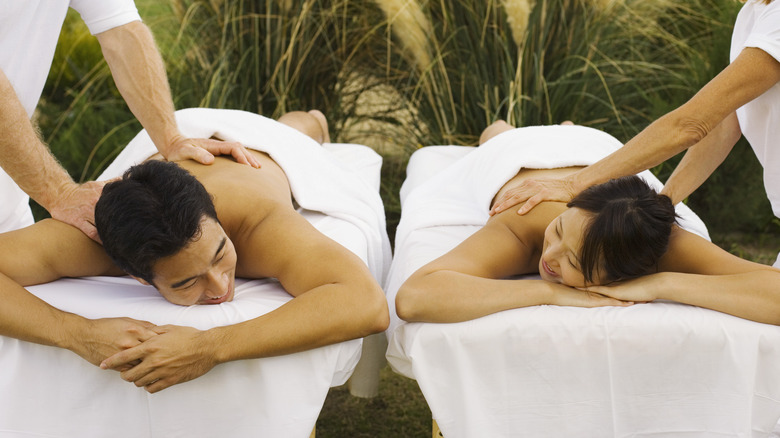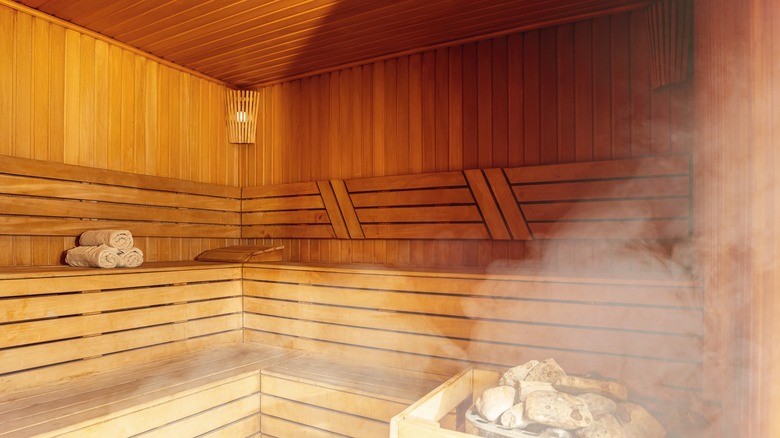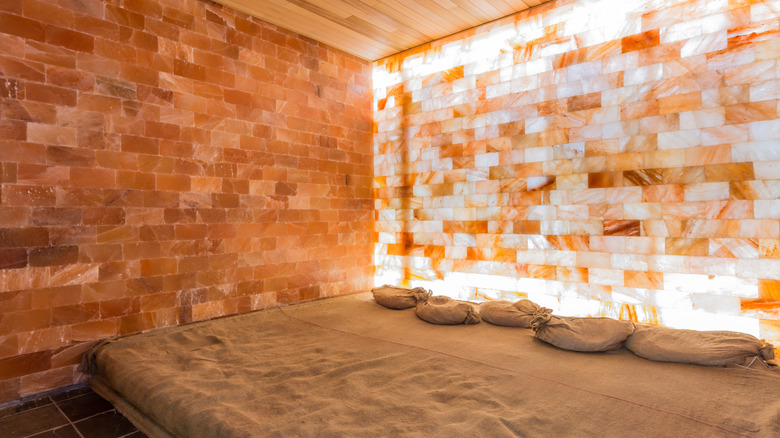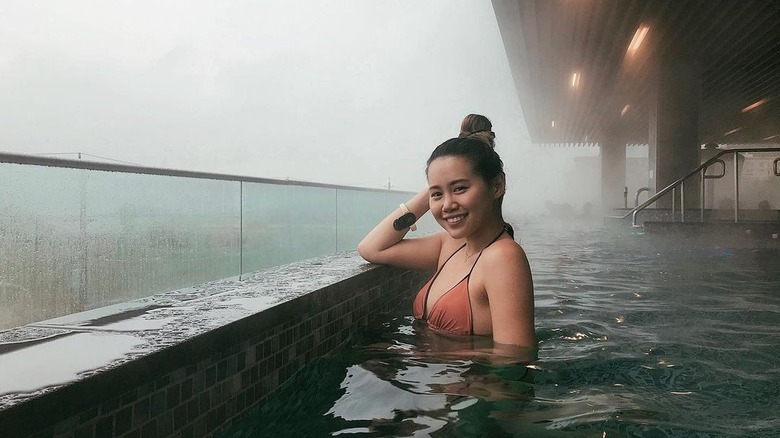Korean Spas Are The Ultimate Self-Care Experience: Here's What You Can Expect
As pioneers in the skincare game, Korea's focus on beauty and wellness, coupled with their innovation, keeps people coming back again and again for their products. Korean skincare products first came to the US around 2011 and grew in popularity shortly after. The 10-step skincare routine was arguably the proponent for the rise of K-beauty here in the United States. Their new smooth, radiant skin wowed people who adopted the practice.
While many people soon found out that nobody actually has ten steps in a single skincare routine, they soon learned the difference between toner and essence and the importance of an oil cleanser and still often implement this knowledge into their beauty ritual. To this day, round-ups and end-of-year lists of the top Korean skincare items are still a hot topic, with #koreanskincare on TikTok trespassing over two billion views.
The bottom line is that thanks to Korea's use of ingredients uncommon in the US, gentle formulations, and deviation from run-of-the-mill industry practices, hordes of people will continue to trust their skin to the products. It's also why people are venturing to Korean spas for all-out beauty treatments.
When were Korean spas created?
Having religious roots, Hanjeungmak, or saunas, were created during the 15th century for medicinal reasons, according to Koreatown LA. They burned wood pine to heat stones around the room, creating a hot, dry environment. During Japanese colonial rule in Korea, the concept of the bathhouse and sauna meshed together, putting the saunas inside of the bathhouses.
Part of the bathhouse experience was skin scrubbing with a textured towel, a practice still upheld today. Now dubbed Jimjilbang, they're filled with modern delights like TVs, showers, and games. A popular relaxation hotspot, many Jimjilbangs in Korea are open 24/7 with the ability to stay overnight.
The Korean spa experience consists of hot, steamy showers, hot and cold pools, massages, various saunas, hot tubs, and the famous intense body scrubs. While mixed-gender communal spaces exist, most spa areas are segregated since it's common to be fully nude.
What happens when you arrive at the spa?
When you first arrive at the Korean spa, you'll pay an entry fee and receive a key. This is for the locker room where you'll be placing your clothes and all of your belongings. You'll also receive a towel and a pair of pajamas to wear in the communal spaces. Once you get to the locker room, place your things in the locker, but keep your locker key with you.
Instead of bringing your wallet along to pay for various amenities, your electronic locker key will be used to charge things to you. At the end of your visit, you'll pay the final amount. At this point, you'll have one of two options: get dressed in the clothes you've received to enter the communal space or head over to the showers. Before going inside the bathhouse, a shower is required. Not every Jimjilbang will require a shower before heading into the sauna, but it doesn't hurt to get clean beforehand.
What kinds of saunas are there?
Accessed via the communal space, you'll find a variety of saunas to access, from dry saunas to steam rooms. Whether or not the room will be gender-segregated, and thus requiring clothes, will depend on the type of sauna it is. The dry saunas often have intense heat and have many health benefits. Due to the high heat, staying hydrated in between trips to each sauna is important. Not every Jimjilbang is the same, but these are some of the specialized saunas you may encounter.
The Himalayan Salt sauna helps to purify the respiratory system, relax muscles, improve the immune system, and boost circulation. Made with pink salt from the Himalayas, one of the only salts you really need in your life, the minerals contain calcium, magnesium, and iron to improve your overall wellbeing.
The Jimjilbang may also have a red clay sauna that's reportedly amazing for sensitive skin. It helps alleviate irritation in sensitive skin and also revamps your complexion. One of the most beautiful spaces in a Korean spa, the gem room is typically made from a crystal like rose quartz or amethyst. Every crystal has their own sickness that they target.
Take a dip in the tubs
After soaking up the benefits of each sauna, it's time to take a soak in the bath. But before you enter, head back to the locker room to shower. In the bathhouses, there are both cold and hot baths available that are designed to improve circulation. Although you, and everyone else in the room, will be fully in the nude, don't expect gawking and staring. Everybody is there for a pleasant, peaceful experience, so don't feel uncomfortable.
After some time in the tub, you can head off to any of the treatments that the Jimjilbang offers. If there's anything you should do before you leave, it's receiving a full body scrub. Known as seshin, the treatment can last anywhere from 30 to 90 minutes. Done after a soak in a hot bath, you'll lie down naked on a table while an attendant scrubs you down with a textured hand glove and exfoliating soap.
The scrub will remove any lingering dead skin hanging around, smoothing and softening your skin like never before. The seshin also helps with improved circulation, reduces cellulite and wrinkles, and stimulates your lymphatic system.
Korean spas you should visit in the US
If you find yourself in the Houston area, visit Gangnam Spa. A luxury wellness space, Gangnam Spa has state-of-the-art facilities with innovative treatments. They have everything from your standard Himalayan salt room to an O2 lounge that uses oxygen therapy to promote circulation, boost energy levels, and reduce stress. A unique feature of the spa is topaz caves, providing privacy with minerals that promote relaxation.
Juvenex Spa is a peaceful oasis in the midst of Manhattan. With the ability to rent an entire floor for groups, it's a great spot in NYC. On top of the facials and massages that Juvenex Spa offers, they have ultimate couple packages and their very own Juvenex jade journey. This package contains a four-step process: a detox in an igloo sauna, a visit to the diamond herbal steam shower, and an immersion into the Japanese-style soaking tubs filled with sake, ginseng, and seaweed.
With one of the most prominent Koreatowns in the country, L.A. is home to many Korean spas. However, Wi Spa certainly stands out. Dubbed one of the best Korean spas in Los Angeles, the 24-hour spa features a full service restaurant, a fitness room, and open air terrace. The family-friendly facility has multiple types of massages, facials, and a space for manis and pedis.



